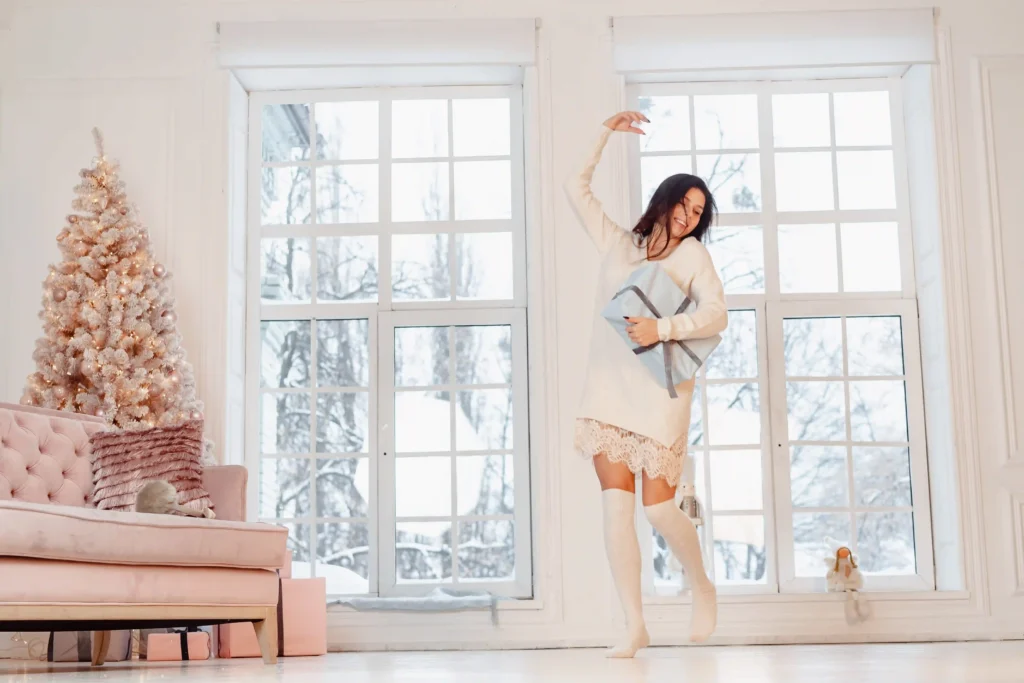Introduction – Why Winter Curtains Matter
As temperatures drop, your windows can account for nearly 30% of heat loss in your home. That’s a shocking statistic, right? Curtains designed for winter are more than decorative—they’re your first line of defense against cold drafts. Imagine them as cozy blankets for your windows, keeping warmth in and energy bills down.
Understanding the Science Behind Thermal Curtains
How Curtains Trap Heat
Thermal curtains work by creating an insulating barrier. When closed, they trap air between the fabric and the window glass, reducing heat loss and maintaining a steady indoor temperature.
The Role of Fabric Density and Layering
Denser materials, such as velvet or wool, hold in more warmth. Adding layers—like a sheer behind a heavy curtain—boosts insulation even more. According to Energy.gov, layered curtains can reduce heat loss by up to 25%.

Best Fabrics for Winter Curtains
Velvet – The Royal Insulator
Velvet is thick, luxurious, and excellent for blocking cold air. It instantly adds a warm, elegant vibe to your space.
Thermal-Backed Curtains
These come with an insulating liner that reflects heat back into your home. Ideal for anyone wanting warmth without bulk.
Wool and Heavy Cotton Options
Wool naturally regulates temperature, making it an eco-friendly and highly effective winter curtain material.
Color Choices That Enhance Warmth
Dark vs. Light Shades
Dark colors absorb heat, while light colors reflect it. For winter, go for deep, rich tones like burgundy, navy, or forest green to create a snug feeling.
Warm Color Palettes for Cozy Interiors
Colors such as rust, mustard, and taupe can make any space feel warmer, even psychologically.
Energy Efficiency and Cost Savings
How Much Energy Can Thermal Curtains Save?
Installing insulated curtains can cut heating costs by up to 15% annually, depending on your climate and window type.
Comparing Curtains to Other Insulation Methods
While double-glazing works wonders, thermal curtains are a low-cost alternative that delivers immediate results.
Layering Curtains for Maximum Warmth
Combining Sheers and Heavy Drapes
This technique offers versatility—light during the day, warmth at night. Plus, it looks stylish and layered.
Using Liners and Thermal Layers
You can attach removable liners to any curtain. According to The Spruce, liners can block up to 90% of drafts, making them a smart addition to existing curtains.
Style Meets Function – Making Your Curtains Aesthetic
Trending Winter Curtain Styles
This season’s favorites include Scandinavian minimalism, bohemian textures, and rustic farmhouse charm. These styles balance warmth with personality.
How to Match Curtains with Winter Decor
Pair dark, heavy curtains with cozy throws and ambient lighting for an inviting winter vibe.
DIY Tips for Upgrading Existing Curtains
Adding Thermal Linings
Transform any curtain by sewing or taping a thermal lining to the back. This DIY trick boosts insulation at minimal cost.
Sewing Weighted Bottoms for Better Insulation
Weights help curtains stay flush with walls and prevent heat from escaping through gaps.
Measuring and Installing Winter Curtains Correctly
Full-Length vs. Sill-Length Curtains
For best results, choose floor-length curtains that extend beyond the frame. This traps more warm air and blocks drafts.
Sealing Gaps and Preventing Drafts
Install rods closer to the ceiling and let curtains pool slightly on the floor. The goal? Zero gaps for heat to sneak out.

Maintenance and Care During Winter
Cleaning Without Losing Insulation Quality
Vacuum your curtains weekly to remove dust that can reduce their thermal effectiveness. Avoid frequent machine washing.
Storing Winter Curtains Post-Season
Store in breathable cotton bags, not plastic, to prevent moisture buildup and odors.
Sustainable and Eco-Friendly Curtain Options
Organic Materials and Low-Impact Dyes
Opt for eco-conscious brands using organic cotton or bamboo fabrics dyed with natural pigments.
Recycled Fabric Curtains
Recycled polyester curtains made from plastic bottles are durable, stylish, and reduce waste.
Common Mistakes to Avoid
Choosing the Wrong Size or Fabric
Avoid lightweight materials like linen in winter—they won’t trap enough heat.
Ignoring Window Drafts
Even the best curtains can’t help if windows leak. Check seals and use draft stoppers for full insulation.
Where to Buy the Best Curtains for Winter
Top Online Retailers and Local Stores
Some trusted names include IKEA, Wayfair, Amazon, and Target. You’ll find a variety of styles, from modern to traditional.
Budget vs. Premium Curtain Options
Budget curtains can perform well, but investing in premium thermal drapes ensures longevity and superior insulation.
Conclusion
Curtains aren’t just decor—they’re an investment in comfort and energy savings. By choosing the right fabric, color, and installation method, you can keep your home toasty all winter long. From DIY upgrades to eco-friendly choices, the perfect winter curtain helps you stay warm while keeping your energy bill in check.
FAQs
1. What are the best curtains to keep cold out in winter?
Thermal, blackout, or velvet curtains with multiple layers are ideal for insulation.
2. Do thermal curtains really work?
Yes! They can reduce heat loss by up to 40%, making your home significantly warmer.
3. Can I use regular curtains in winter?
Yes, but adding a thermal lining or extra layer greatly improves heat retention.
4. Are blackout curtains good for winter?
Absolutely. They block both sunlight and heat loss, enhancing insulation.
5. How do I clean winter curtains without damaging them?
Use a vacuum with a soft brush attachment or dry clean them if lined with thermal material.


